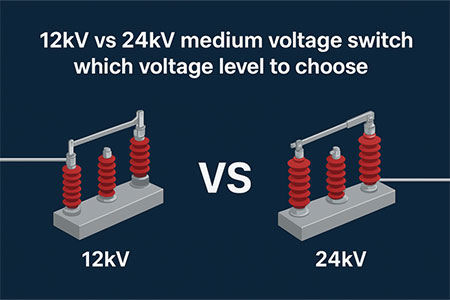Selecting the right voltage level for a medium voltage switch is a key decision in designing safe and efficient electrical distribution systems. The most commonly used configurations in today’s networks are 12kV and 24kV switches, each offering specific advantages depending on the application, installation environment, and system capacity.
A 12kV medium voltage switch is typically used in compact urban substations, commercial buildings, and small-scale industrial facilities. It provides reliable performance for systems with limited space and moderate load capacity, making it a cost-effective solution for low to medium power distribution networks.
In contrast, 24kV medium voltage switches are designed for higher-capacity networks such as renewable energy substations, industrial plants, and rural grid extensions. The higher voltage rating allows for longer transmission distances, reduced current losses, and improved system efficiency. However, the equipment size, insulation level, and installation cost are generally higher than those of 12kV models.

When choosing between 12kV and 24kV switches, engineers should evaluate factors such as system load, distance, fault current level, and maintenance requirements. For future-oriented projects, opting for 24kV equipment can provide additional headroom for capacity expansion and compatibility with modern grid standards.
Putai offers a complete range of medium voltage switches covering both 12kV and 24kV options, designed to meet diverse distribution network requirements. Our products are tested for performance, safety, and reliability under international standards, ensuring dependable service across various applications.